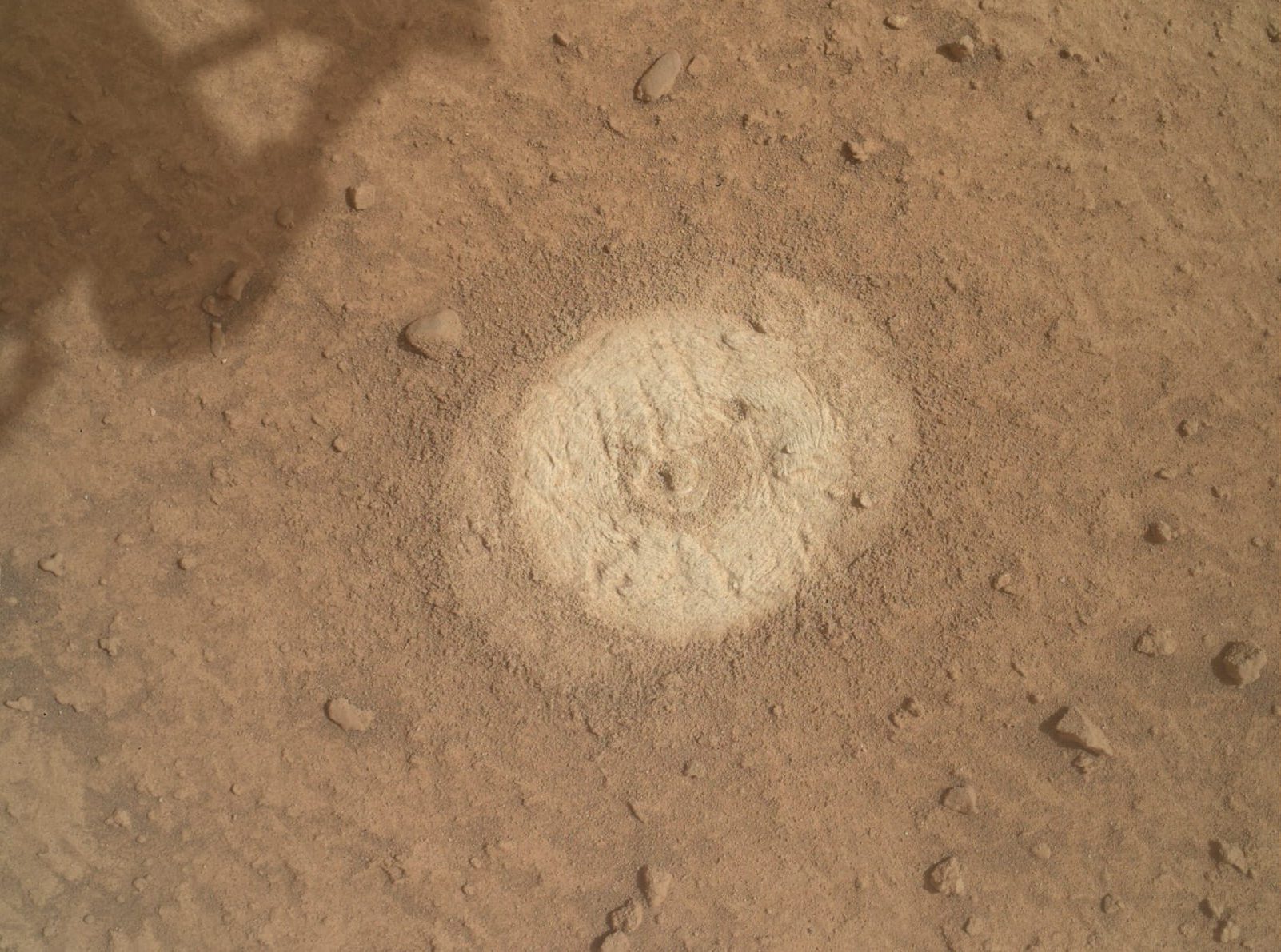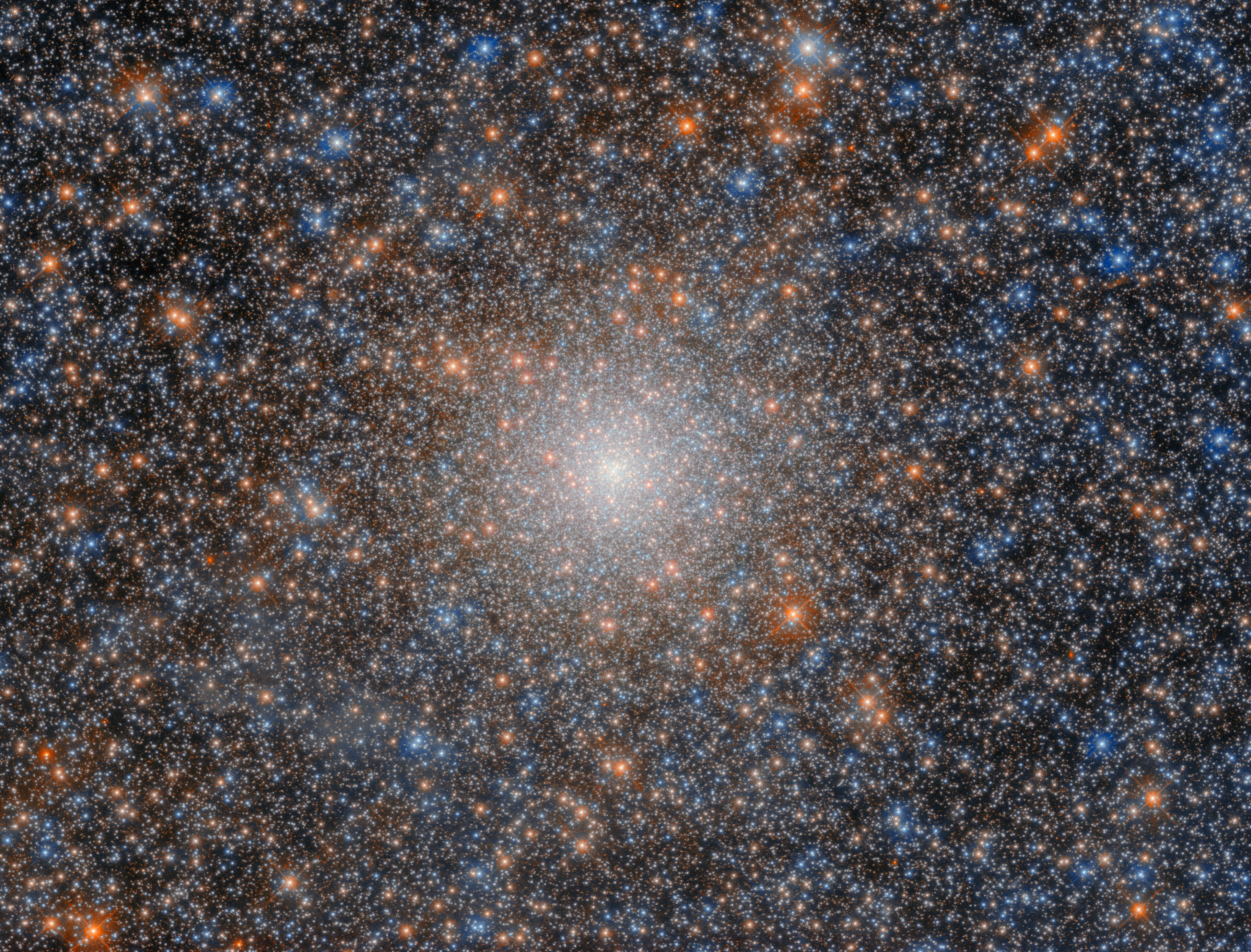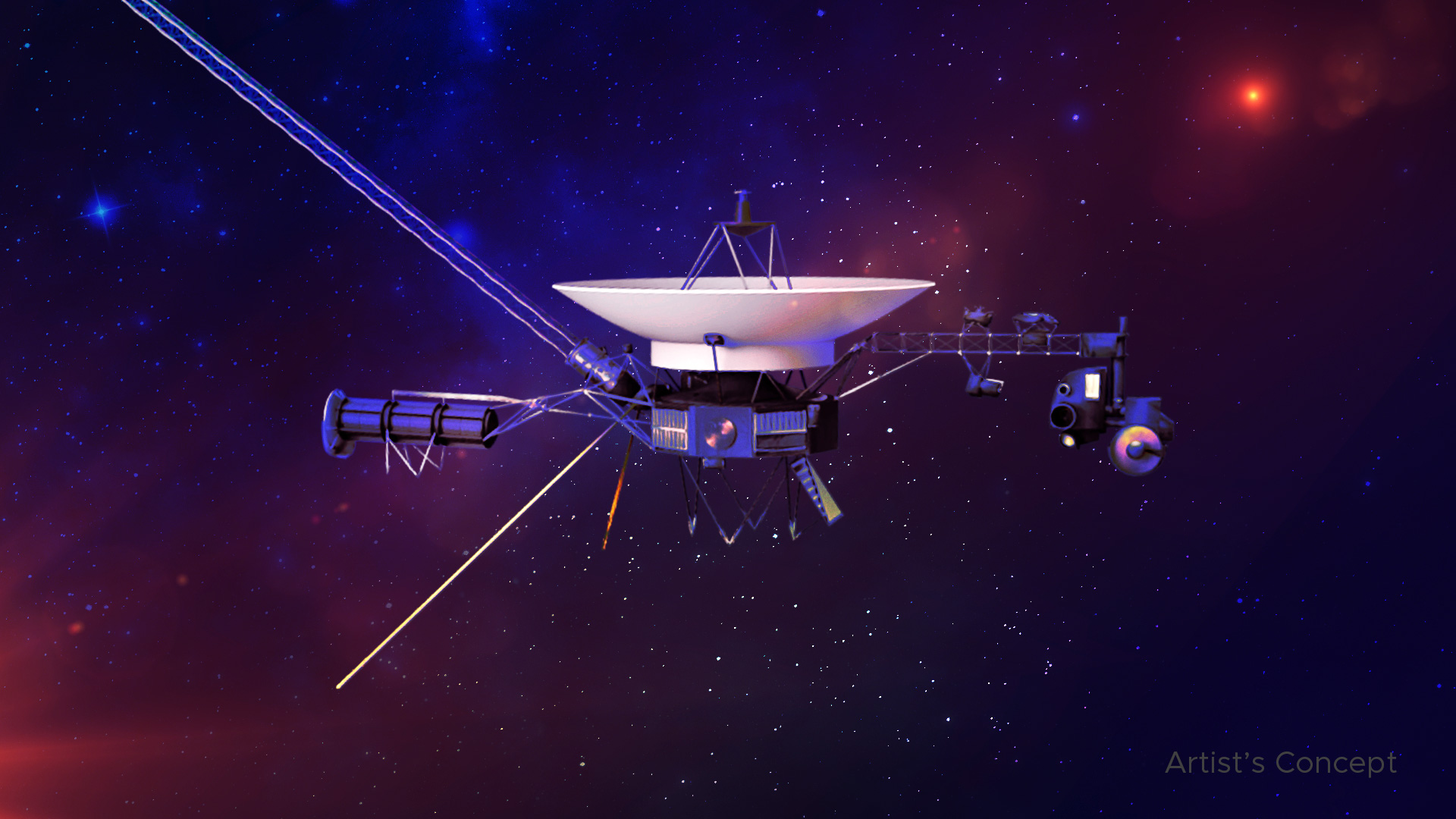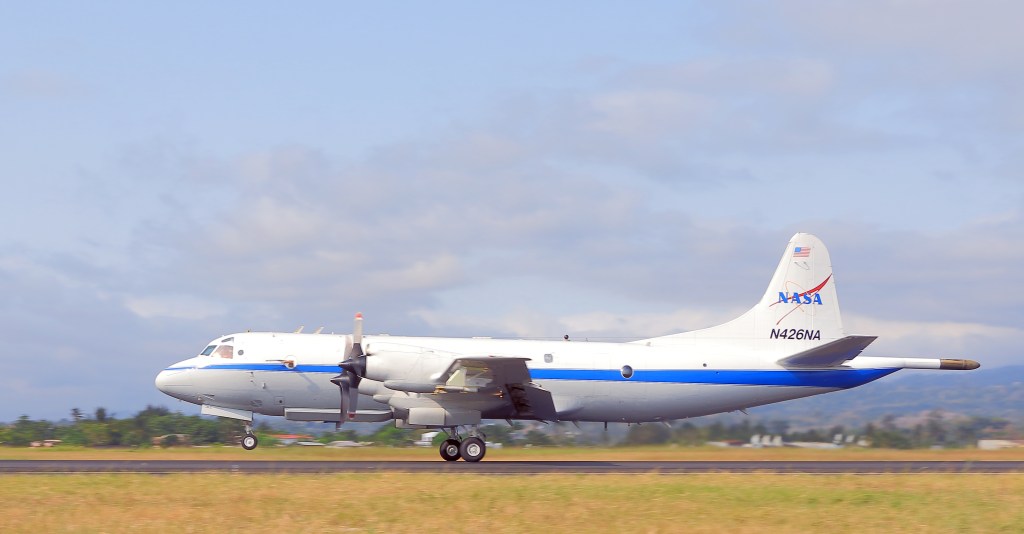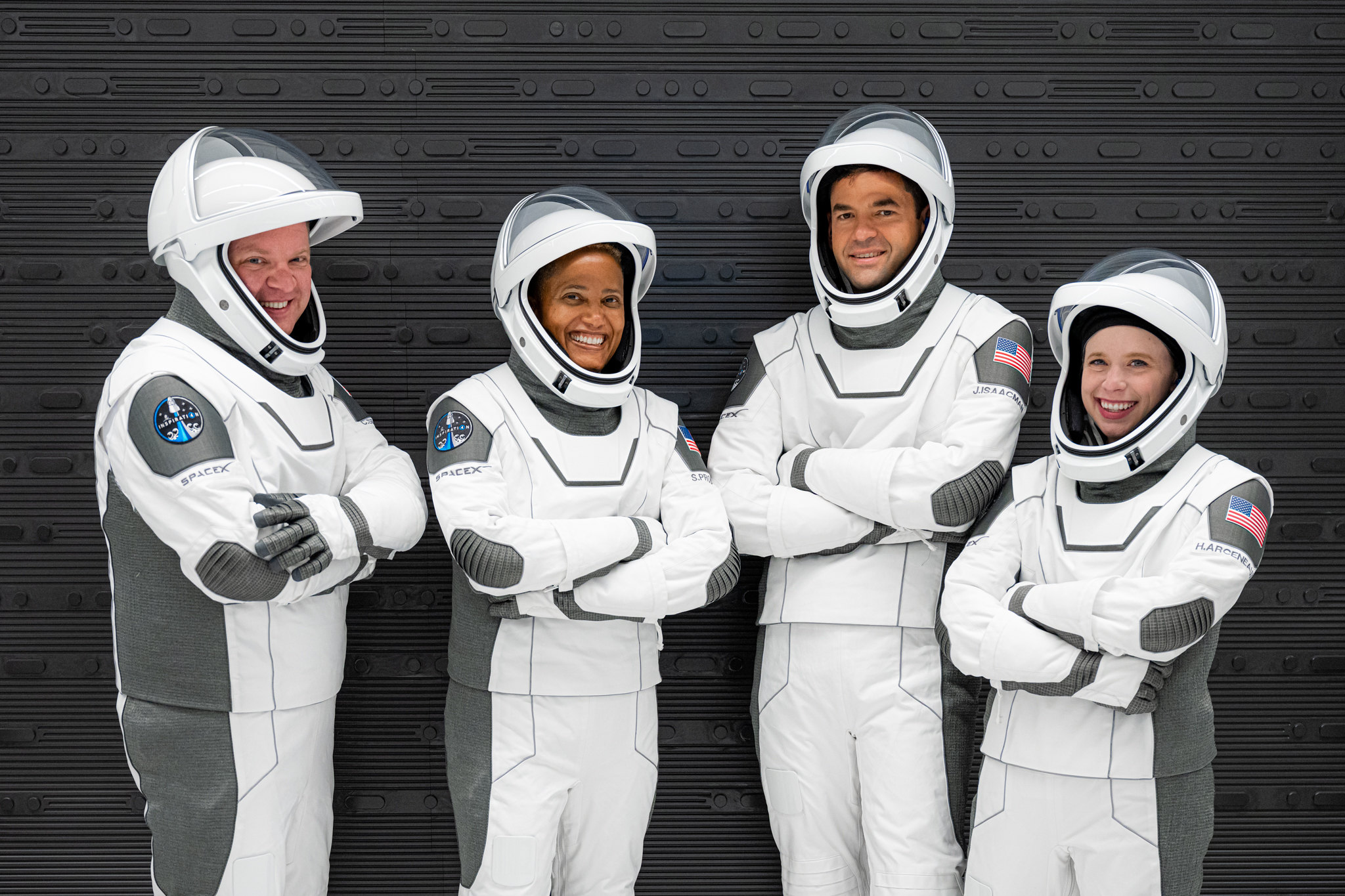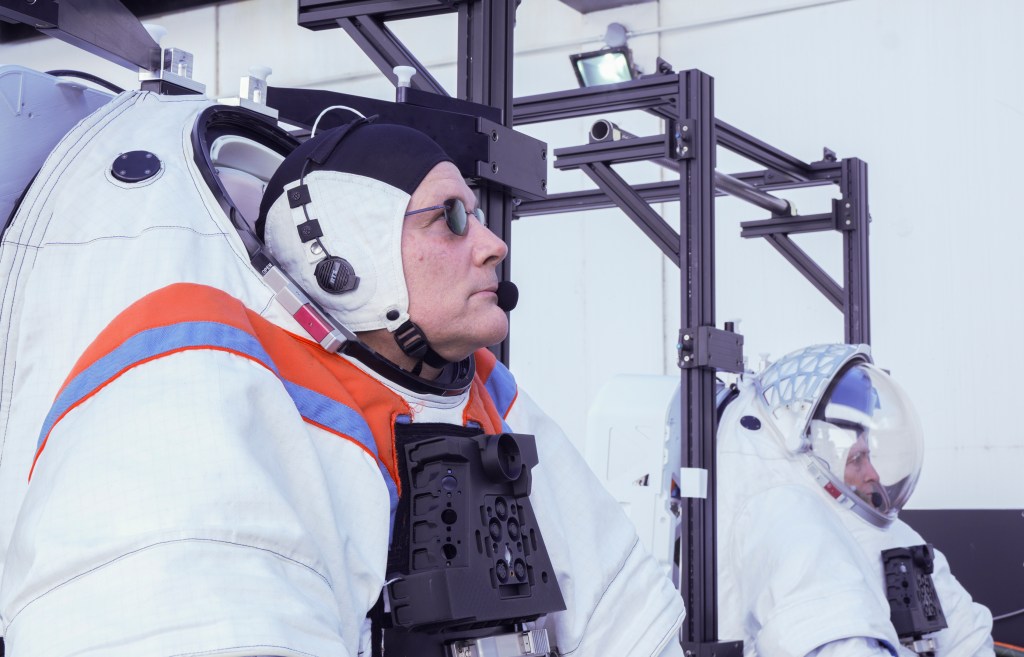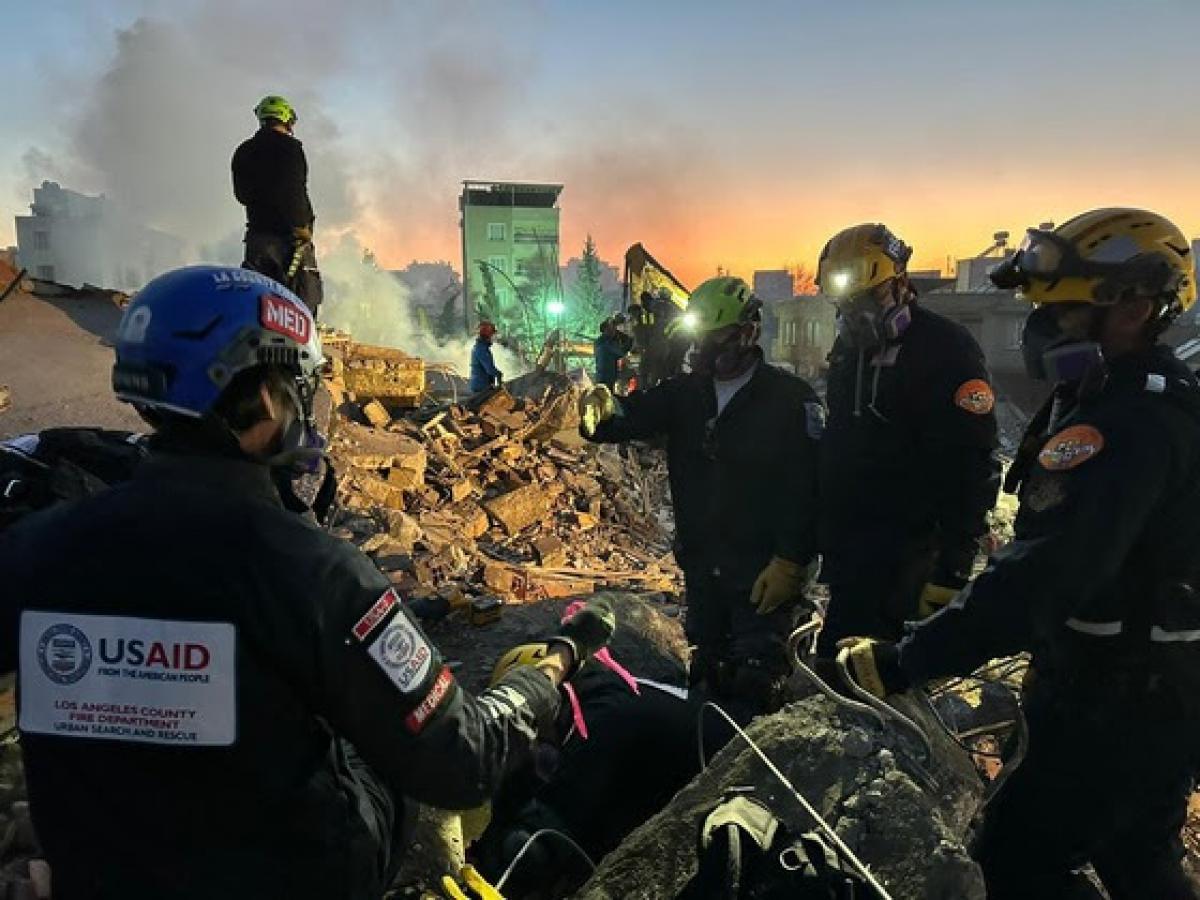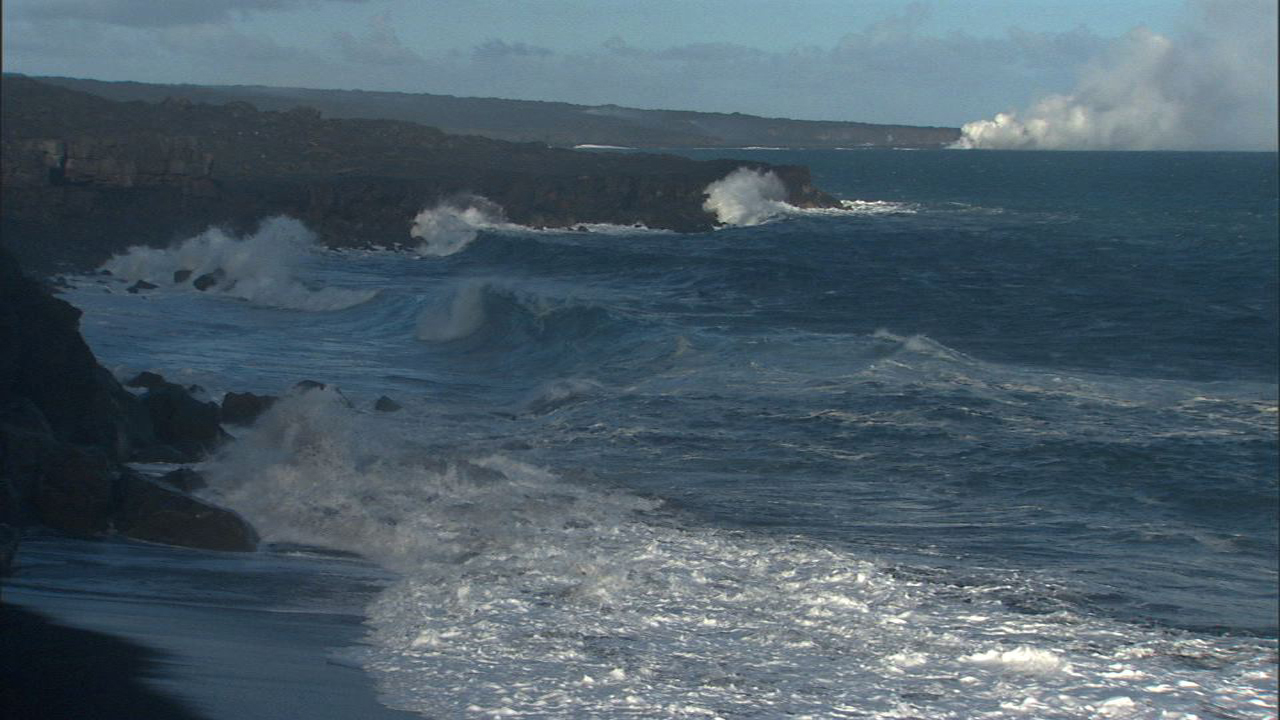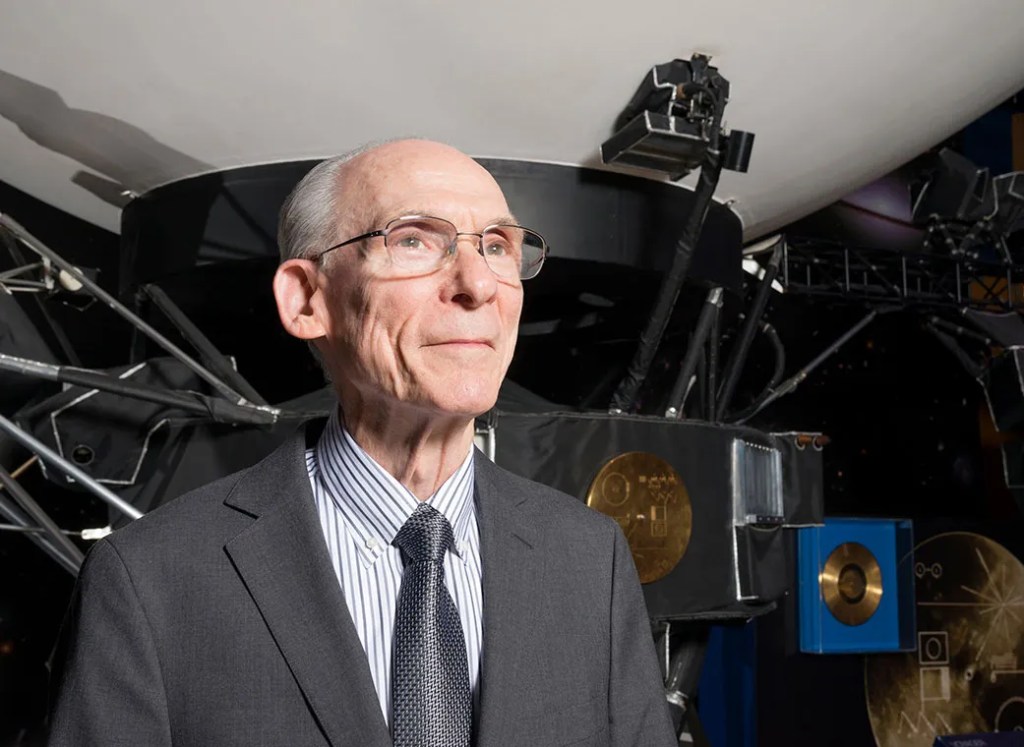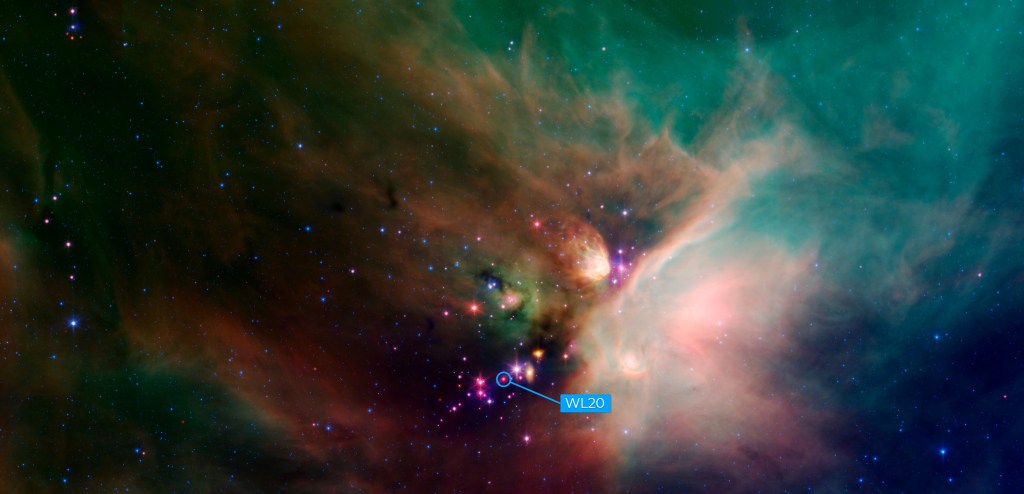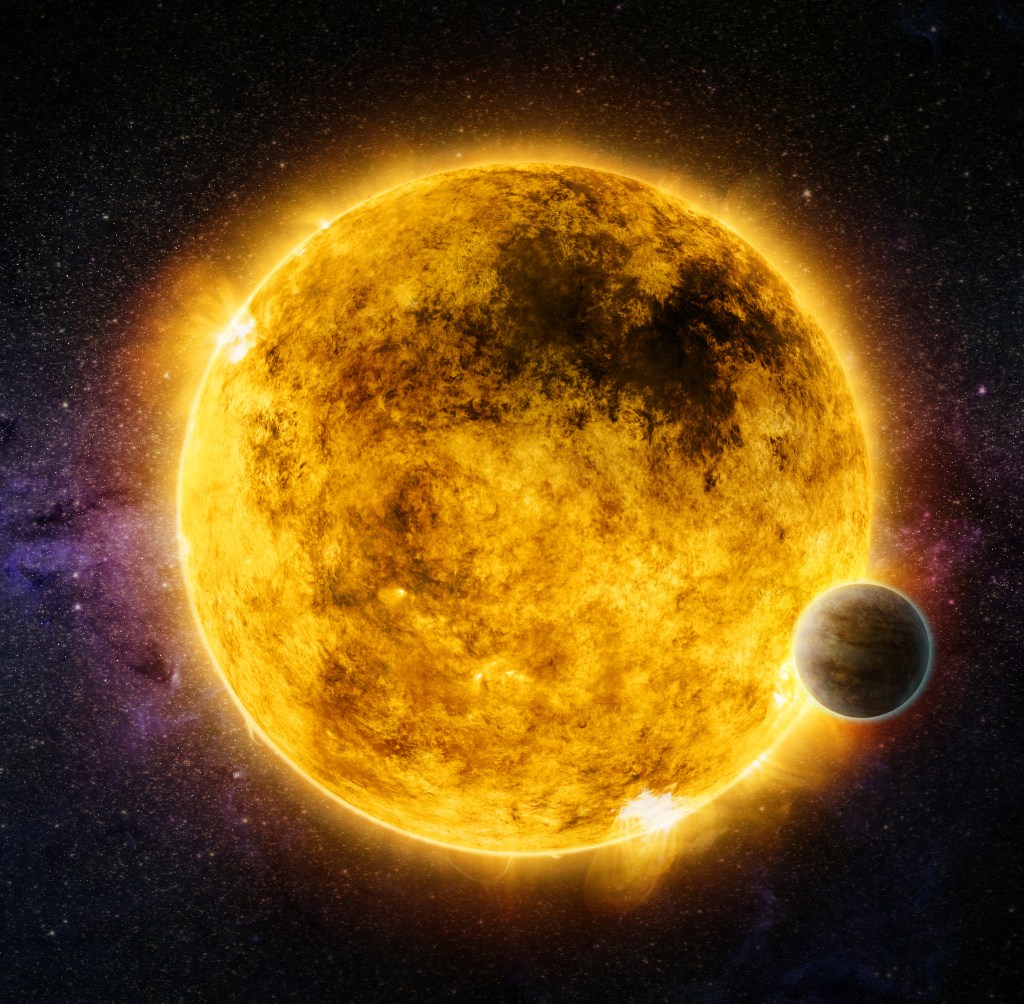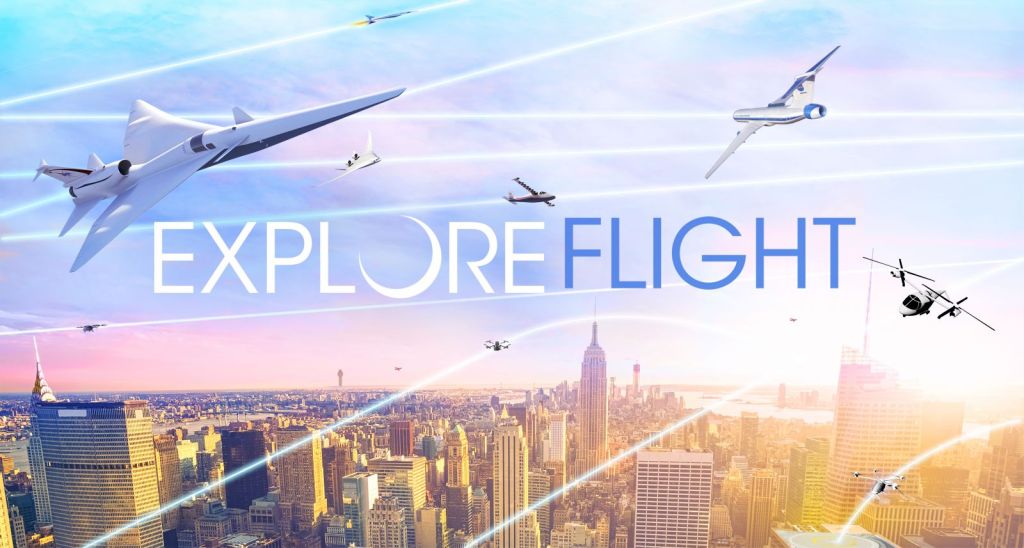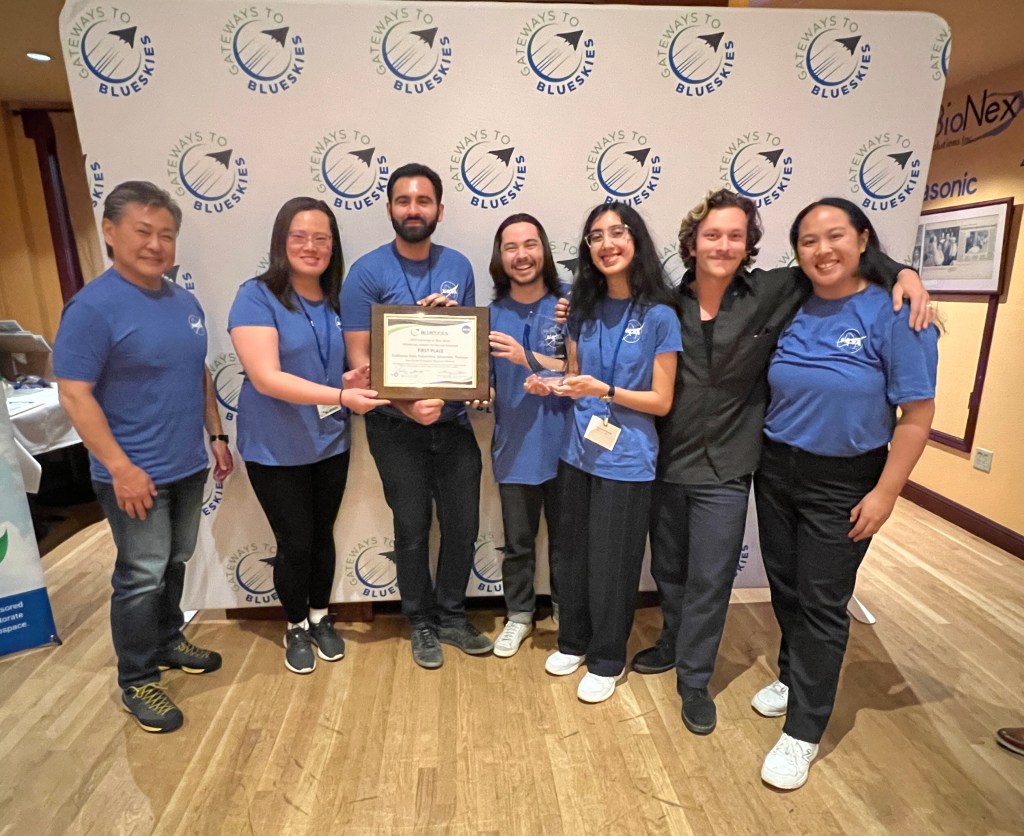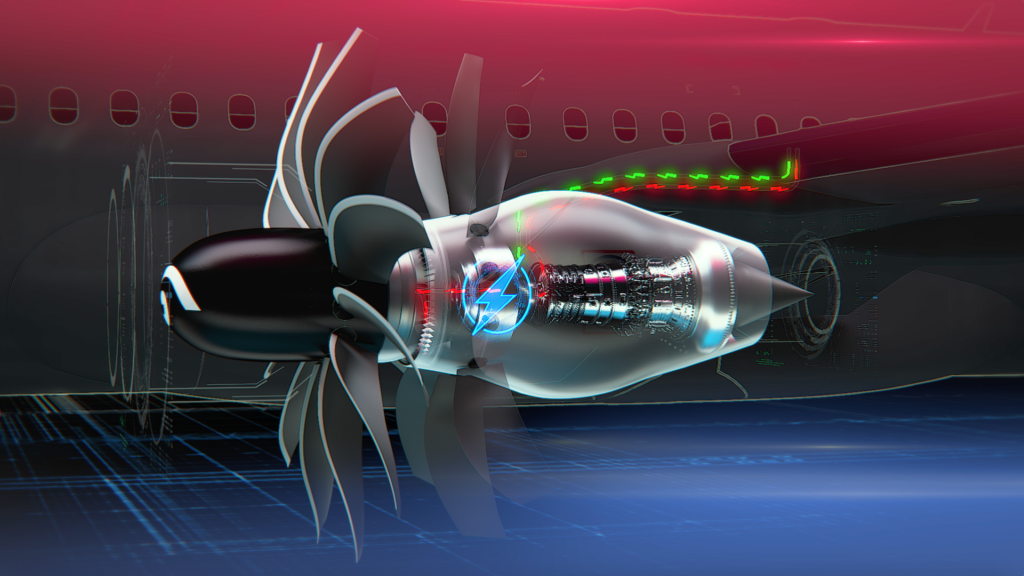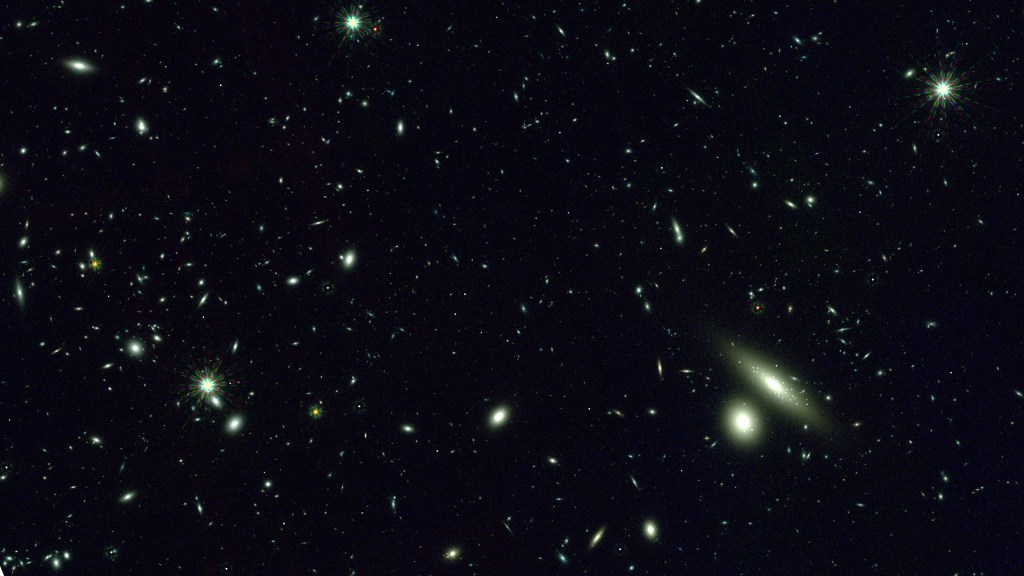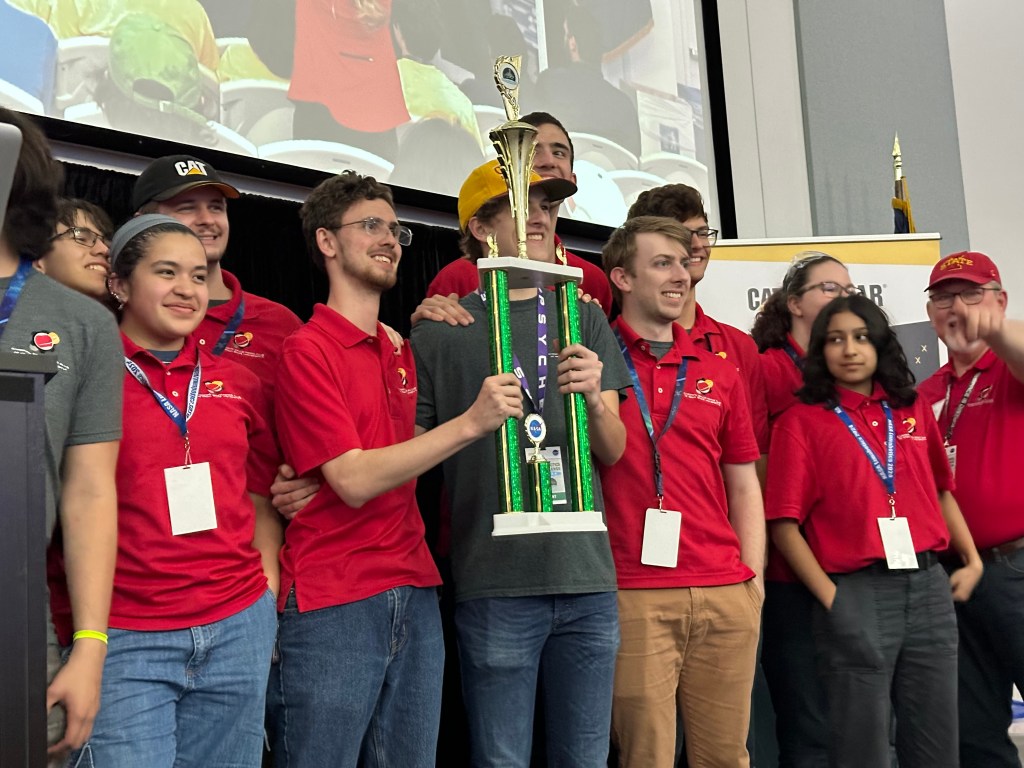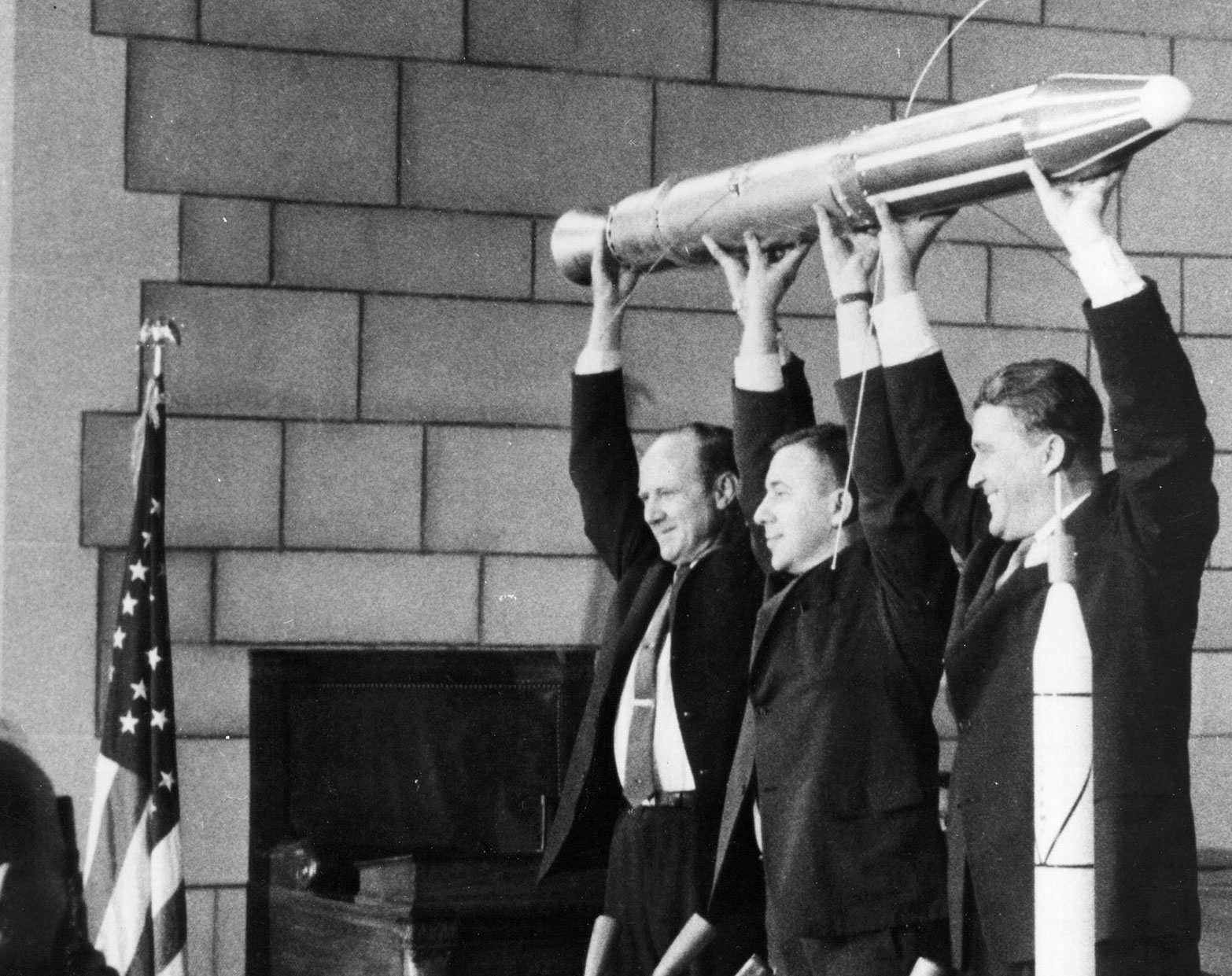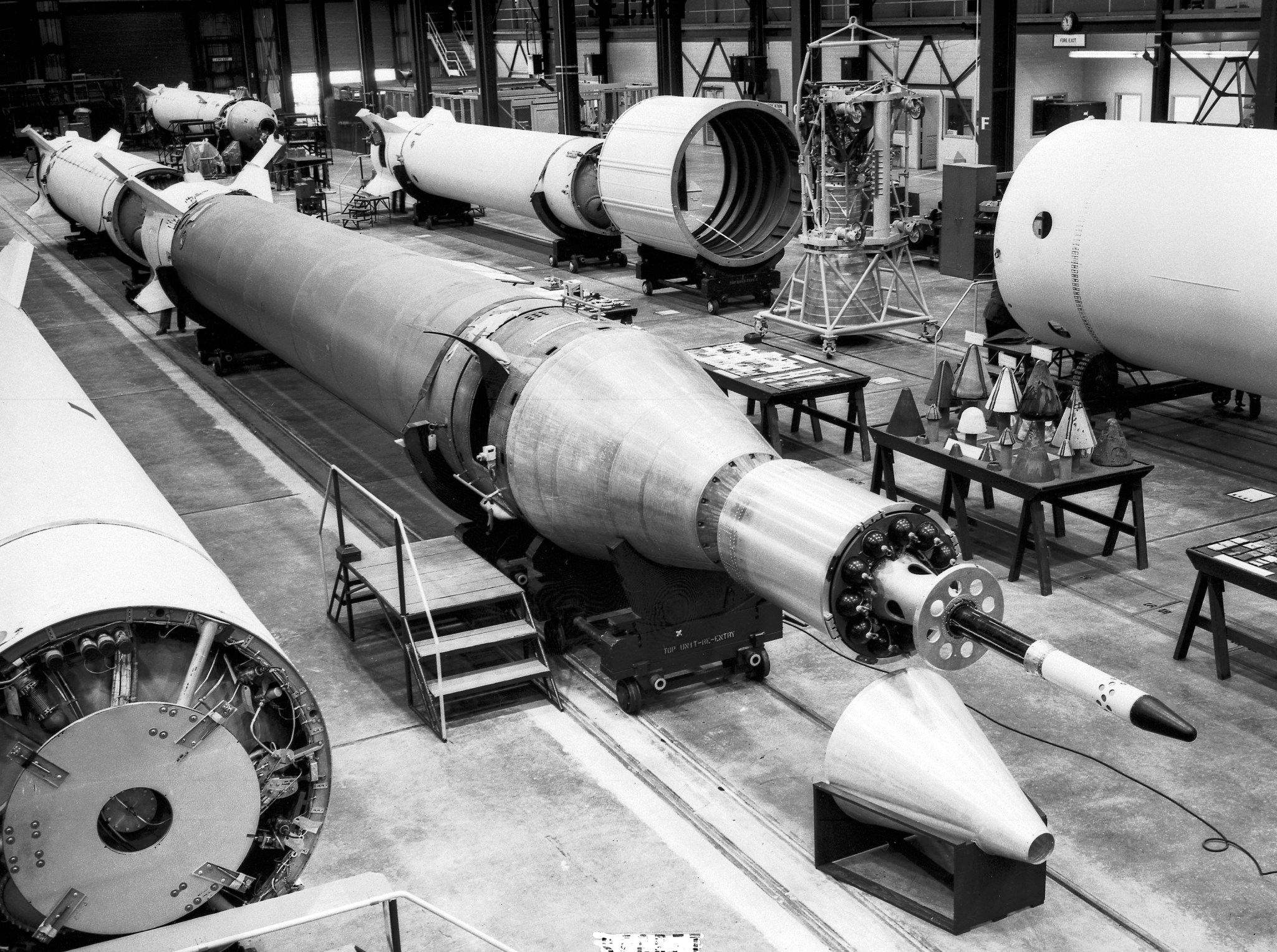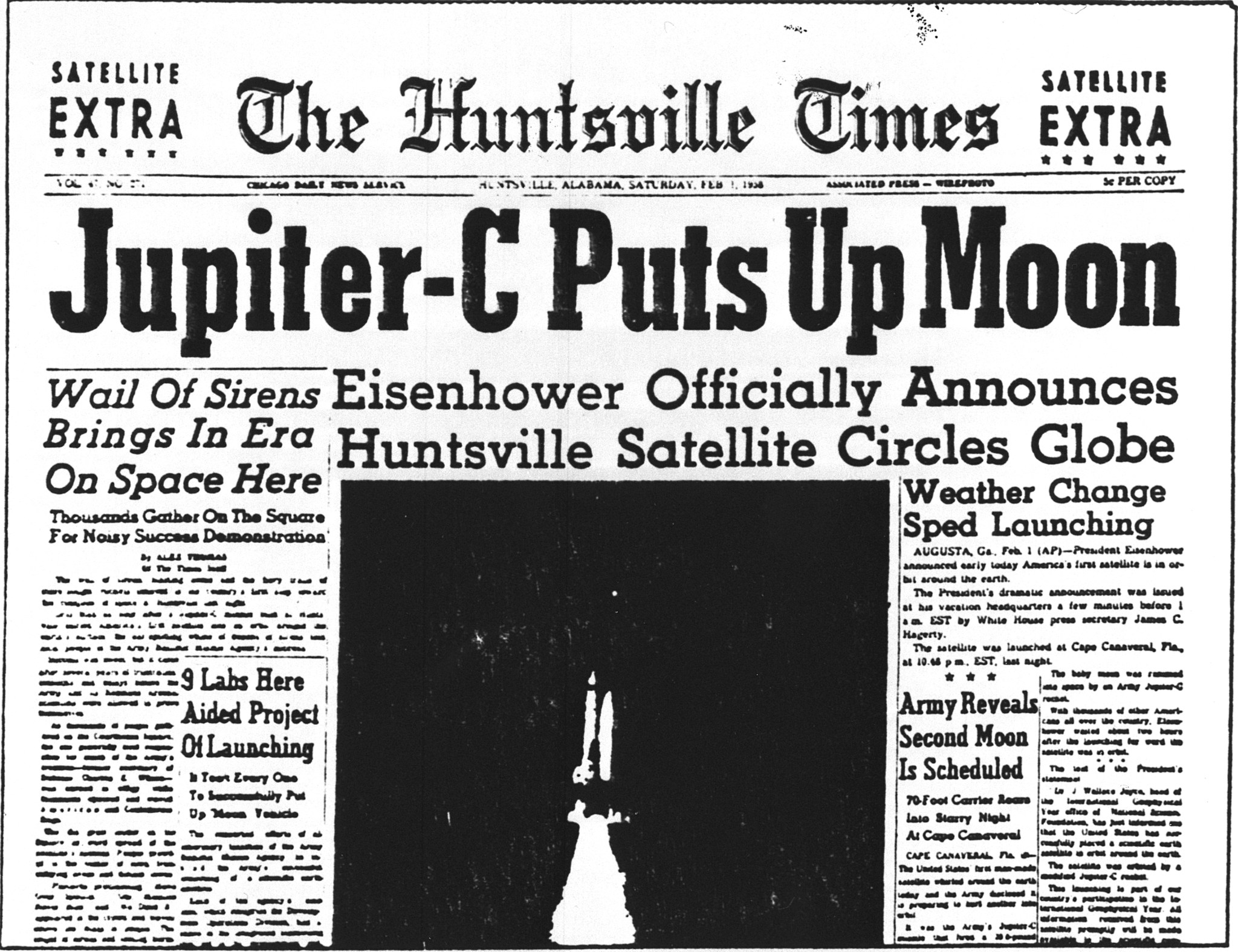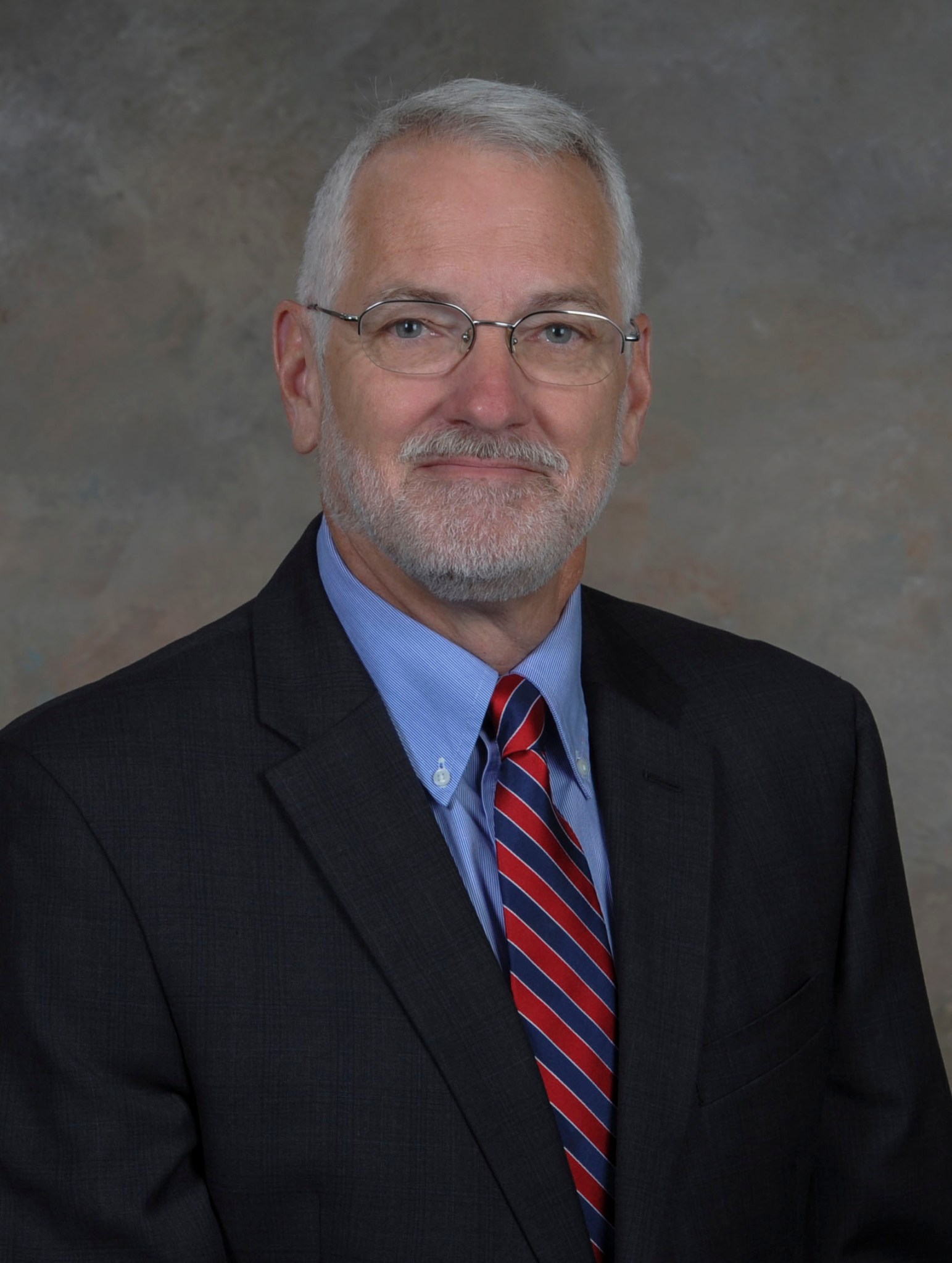In This Week’s Star
- Marshall Team Members View Orion Stage Adapter Before Flight to Kennedy
- Marshall Scientist Colleen Wilson-Hodge and GBM Team Win Top High-Energy Astronomy Prize
- Remembering Marshall’s Involvement with Explorer 1 on its 60th Anniversary
- Marshall’s Bruce Tiller Named Manager of Space Launch System Boosters Office
- Marshall Remembers Those Who Sacrificed All for Space Exploration
- Virtual Reality Program Allows for Immersive SLS Experience
- U.S. Rep. Mo Brooks Visits Marshall to View Orion Stage Adapter
- This Week in NASA History: STS-63 Launches – Feb. 3, 1995
- Obituaries
Marshall Team Members View Orion Stage Adapter Before Flight to Kennedy

Marshall Space Flight Center team members gathered Jan. 30 to view flight hardware for NASA’s new heavy-lift rocket, the Space Launch System. The Orion stage adapter will be part of Exploration Mission-1, the first flight of SLS and the Orion spacecraft, and a flight that will help verify NASA’s new deep-space exploration systems. The adapter connects Orion with the SLS interim cryogenic propulsion stage, which gives Orion the push it needs to go to deep space. The adapter also provides a ride for 13 small satellites that will be deployed after Orion moves away from the stage. The hardware will soon board the agency’s Super Guppy aircraft for delivery to NASA’s Kennedy Space Center. Before launch, technicians will install the small satellites and the adapter will be stacked on the interim cryogenic propulsion stage, which was delivered to Kennedy last year. (NASA/MSFC/Tyler Martin)
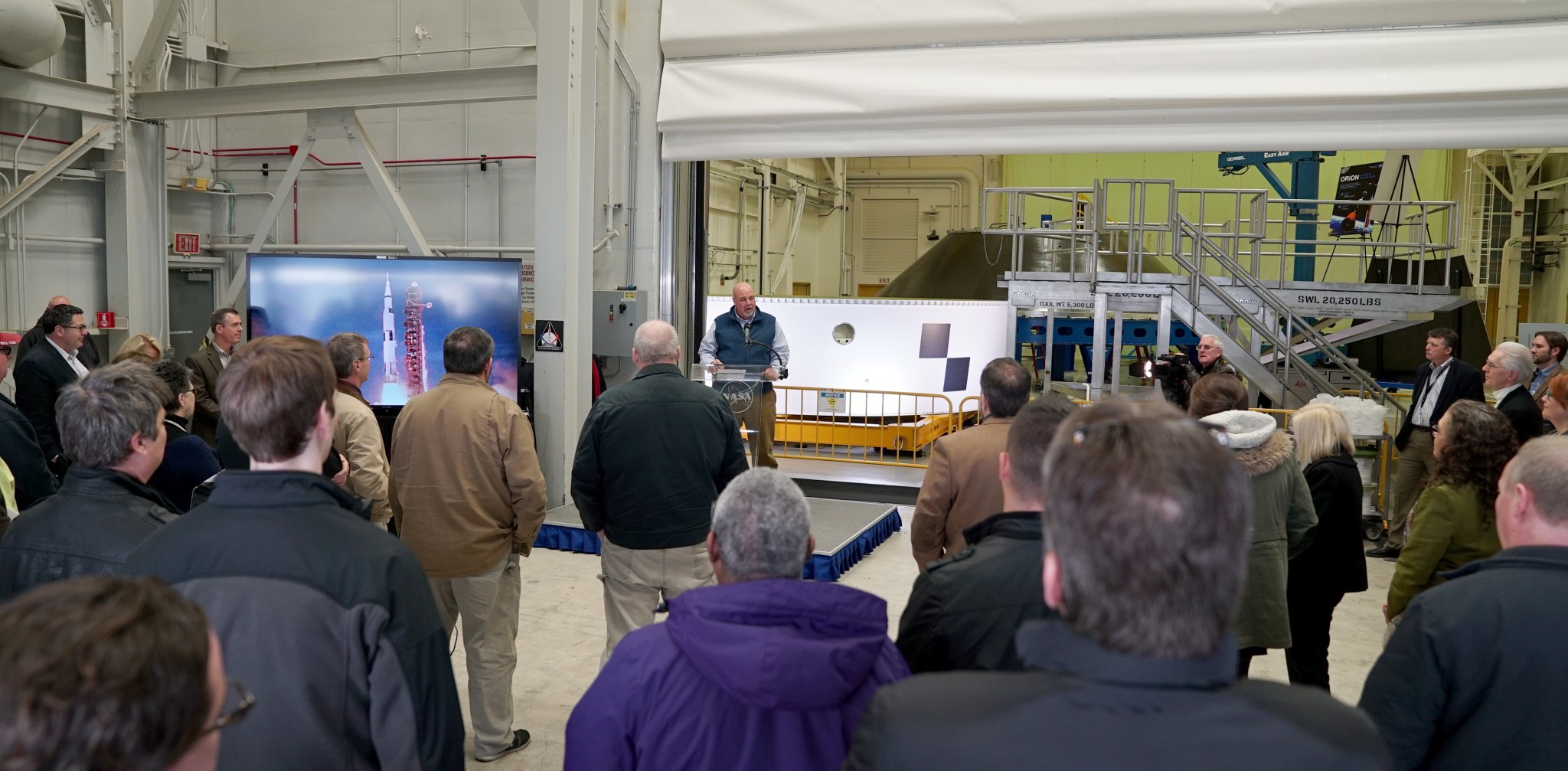
Standing in front of the Orion stage adapter, SLS Program Manager John Honeycutt thanked Marshall team members for building the adapter that will fly on Exploration Mission-1, the first flight of the SLS deep space rocket. The team gathered in Building 4708, an advanced manufacturing area where they completed the adapter’s final assembly. The adapter was designed and built at Marshall with advanced friction stir welding technology. It will connect the SLS interim cryogenic propulsion stage to Orion and carry 13 CubeSats that will fly as secondary payloads. The CubeSats are shoe-box-sized science and technology investigations that will help pave the way for future human exploration in deep space. The Orion stage adapter flight article recently finished major testing of the avionics system that will deploy the CubeSats. (NASA/MSFC/Tyler Martin)
Marshall Scientist Colleen Wilson-Hodge and GBM Team Win Top High-Energy Astronomy Prize
NASA Marshall Space Flight Center astrophysicist Colleen Wilson-Hodge and the Fermi Gamma-ray Burst Monitor team are recipients of this year’s top prize in high-energy astronomy.
The High Energy Astrophysics Division of the American Astronomical Society selected Wilson-Hodge and the Gamma-ray Burst Monitor team to receive the 2018 Bruno Rossi Prize for their role in the first joint detection of gravitational and light waves from the same cosmic event — the spectacular smashup of two neutron stars in a distant galaxy.
“Discovering the first unambiguous gamma-ray burst associated with a gravitational wave has been an extremely exciting discovery,” said Wilson-Hodge, principal investigator for GBM at Marshall. “It would not have been possible without the incredible dedication and amazing scientific contributions of the entire Fermi GBM team.”
At 7:41 a.m. CDT Aug. 17, GBM picked up a weak pulse of gamma rays and reported it within 14 seconds to astronomers around the globe. GBM’s alert caught the attention of scientists working with the National Science Foundation’s Laser Interferometer Gravitational-wave Observatory, who search gravitational wave signals long thought to be associated with some gamma-ray bursts. Two seconds prior to GBM’s detection, LIGO detected gravitational wave source GW170817.
News of the joint detection spread quickly and encouraged astronomers to look for the aftermath of the explosion with telescopes spanning the electromagnetic spectrum. Combining gravitational wave and light observations gives a more complete story about what happens when neutron stars collide and how the event evolves over time.
“NASA and its partners are leading the way into a new realm of multi-messenger astrophysics,” said David Burns, director of Marshall’s Science and Technology Office. “Colleen and the GBM team are exploring the universe in fundamentally new ways, and we look forward to this team’s many exciting discoveries.”
“The discovery of gamma-radiation immediately following the detection of a gravitational wave from a distant galaxy will be remembered hundreds of years from now as a breakthrough observation in high-energy astrophysics,” said Gerald Fishman, NASA emeritus scientist and winner of the 1994 Rossi Prize. “Colleen Wilson-Hodge and the Fermi Gamma-ray Burst Monitor Team are well-deserved of being awarded the Rossi Prize for this accomplishment.”
The Rossi Prize is awarded annually for a significant contribution to high-energy astrophysics with particular emphasis on recent, original work. The award includes an engraved certificate and a $1,500 award. Wilson-Hodge will give a lecture at the 233rd AAS meeting in Seattle in January 2019.
Remembering Marshall’s Involvement with Explorer 1 on its 60th Anniversary
By Brian Odom
Jan. 31 marks the 60th anniversary of Explorer 1, America’s first satellite launched into space. While the small satellite officially launched the U.S. into the Space Age, it also contained the cosmic ray detector, ushering in a new era of scientific exploration. Designed to measure the radiation environment in Earth orbit, the instrument led to the discovery of the Van Allen radiation belt. The following is an account of NASA Marshall Space Flight Center’s involvement with the historic event:
On Oct. 4, 1957, the Soviet Union surprised the world with the launch of a 23-inch-diameter, 184-pound ball designated Sputnik 1, the world’s first artificial satellite. For many in the United States, this news came as a profound shock and produced a considerable crisis of confidence.
The news hit especially hard in Huntsville. Eberhard Rees, who would later become Marshall Space Flight Center’s second center director, recalled how he learned about Sputnik on the evening of Oct. 4. Both he and Wernher von Braun, technical director of the Army Ballistic Missile Agency at the time, decided to remain after work in their ABMA offices at Redstone Arsenal that evening.
“Von Braun came over to my office and said he’d just got a telephone call of a report of the Russians,” Rees recalled. Rees also recalled how von Braun carried news regarding Sputnik with him to the reception later that evening where Maj. Gen. John B. Medaris, commandant of the Army Ballistic Missile Agency was hosting Neil Hosier McElroy, who in a few days would be succeeding then-Secretary of Defense Charlie Wilson.
Armed with the news about Sputnik, von Braun decided to use the reception as an opportunity to impress on McElroy ABMA’s readiness and willingness to use the Jupiter-C rocket to place America’s first satellite in orbit.
Peter T. Chew, writing in the National Observer five years after the event, recounted von Braun’s comments to McElroy at the reception: “Mr. Secretary. When you get back to Washington, you’ll find that all hell has broken loose. We can put up a satellite in 60 days — once you give us the go-ahead.”
Medaris interjected: “Make it 90 days, Wernher.”
“Okay, make it 90 days.” said von Braun.
Referring to the confidence he and others at ABMA had regarding Jupiter-C, Rees stated, “We could have beaten the Russians easy by half a year or so.” Like Rees, most Americans had assured themselves of a perceived scientific and technological superiority over its Cold War enemy. With their confidence shattered by the success of Sputnik, Americans demanded a response to restore the balance of power.
Back in Huntsville, the Army’s rocket team, led by and von Braun, argued that their own Jupiter-C rocket, also known as Juno I, was capable of that response. But it was the launch of the 12-pound Sputnik 2 carrying dog “Laika” in late 1957 and the public failure of the Navy’s Project Vanguard launch on Dec. 6, 1957, that compelled the Department of Defense to turn to the Army for an answer.
Back in 1954, the Army had proposed the use of the Redstone rocket to launch an Earth-orbiting satellite as part of Project Orbiter. Despite the decision to go with the U.S. Naval Research Laboratory-proposed Project Vanguard, von Braun and his fellow ABMA rocket scientists in Huntsville continued to expand the Redstone rocket into the modified Jupiter-C version, fired for the first time in September 1956. The ABMA group quietly placed the hardware in storage, maintaining it at a high state of readiness.
To accomplish the mission, the ABMA teamed with William H. Pickering, director of the Jet Propulsion Laboratory, and James van Allen of the University of Iowa, whose “Proposal for Cosmic Ray Observations in Earth Satellites” was configured for both the Vanguard and Jupiter-C.
At 10:48 p.m. on Jan. 31, 1958, the Jupiter-C lifted off from Cape Canaveral and successfully deployed Explorer I. One hundred and eight minutes after launch, JPL’s Frank Goddard confirmed Explorer I’s successful orbit saying, “We’ve got the bird.” At 2 a.m., von Braun, Pickering and van Allen attended a press conference in Washington and photo event at the National Academy of Science. The next morning, the headline in the Huntsville Times read, “Jupiter-C Puts Up Moon.”
Explorer I relayed information from space to Earth stations until May 23, 1958, when its batteries were exhausted. It continued to orbit for several years before finally reentering the Earth’s atmosphere March 31, 1970.
Today, NASA is developing the Space Launch System, a powerful, advanced launch vehicle that is to be the enabling technology for our national goal of deep space exploration. Standing on the foundations laid by Explorer I in the initial foray into space, SLS seeks to open a new era of deep-space exploration and scientific discovery.
Marshall’s Bruce Tiller Named Manager of Space Launch System Boosters Office
Bruce Tiller has been appointed to the Senior Executive Service position of manager of the Space Launch System Boosters Office at NASA’s Marshall Space Flight Center.
The Senior Executive Service is the personnel system covering top managerial positions in federal agencies.
Marshall’s SLS Boosters Office is responsible for the design, development and flight of the solid rocket boosters for the SLS rocket, NASA’s deep-space flagship rocket, designed for a new era of science and exploration.
Tiller will oversee the prime contract for Orbital ATK — the provider that builds and delivers the boosters — and a workforce of about 100 civil servants and contract support personnel.
Throughout his 28-year career at NASA, Tiller has served in progressively responsible technical, managerial and leadership roles. He joined Marshall in 1989 as a thermal analyst supporting the Space Shuttle Main Engine Project. From 1995 to 2001, he led a team of thermal analysts supporting the Space Shuttle Main Engine Project, Fastrac engine, the Propulsion Test Article and the X-33 engine.
As manager of the Systems Analysis Branch from 2001 to 2004, Tiller oversaw multiple teams of analysts focused on rocket engine cycle balances, solid motor ballistics, main propulsion system performance, reliability/operability studies and shuttle photographic analysis. In 2004, he was named manager of the Thermal and Combustion Analysis Branch where he oversaw thermal analysis and combustion computational fluid dynamics for the Ares and Shuttle propulsion projects.
Since 2008, Tiller has served as deputy manager of the Ares and SLS Boosters Office and has been acting manager since February 2017. Tiller helped lead the transition from Ares to SLS and development of the SLS Booster design. As acting manager, he led the team through the first two reviews to certify the boosters for flight.
Prior to joining NASA, Tiller supported Marshall as a thermal analyst for Rockwell International and SRS Technologies.
A native of Columbus, Georgia, Tiller received a bachelor’s degree in geology from the University of North Carolina in Chapel Hill; a bachelor’s degree in mechanical engineering from the University of Alabama in Birmingham, and a master’s degree in mechanical engineering from the University of Alabama in Huntsville. He has received numerous honors and awards for his service to NASA, including the NASA Outstanding Leadership Medal and the NASA Exceptional Service Medal.
Tiller and his wife, Patricia, reside in Huntsville. They have two children, Matthew and Elizabeth.
Marshall Remembers Those Who Sacrificed All for Space Exploration
By Amanda M. Adams
NASA’s Marshall Space Flight Center paused Jan. 25 to reflect on the legacy and memory of colleagues who lost their lives advancing space exploration during a candle lighting ceremony observing the agency’s annual Day of Remembrance.
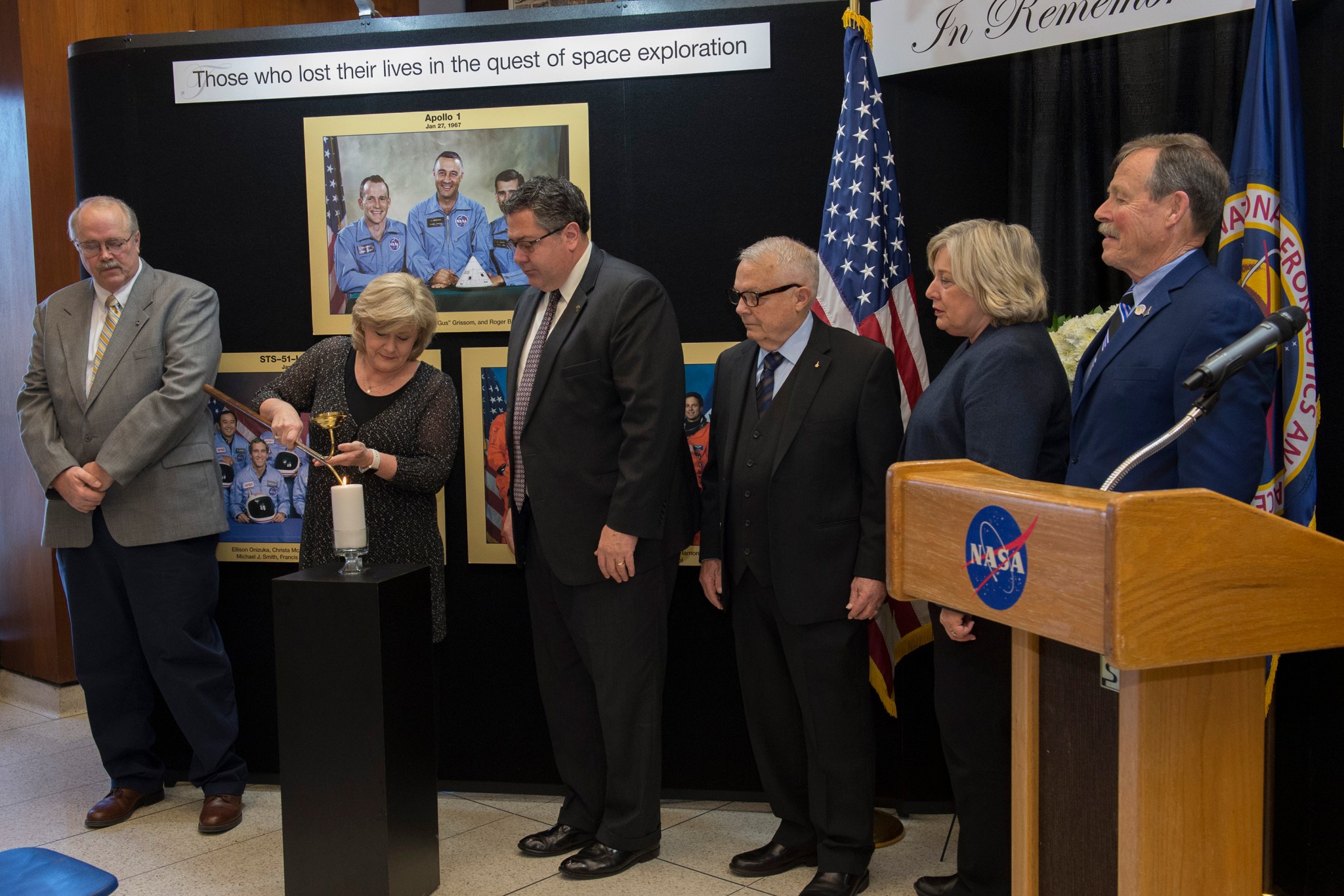
“Human spaceflight will always be dangerous — with that risk, comes the responsibility to not just honor those who have lost their lives, but learn from them,” said Marshall Director Todd May as he opened the ceremony. “Those tragic moments serve as a solemn reminder of what’s at stake and why we must remain vigilant when it comes to safety.”
This year marks 15 years since the tragic loss of the space shuttle Columbia crew. The seven-member crew lost their lives the morning of Feb. 1, 2003, when the orbiter disintegrated upon re-entry to Earth’s orbit.
In addition to remarks from May, Marshall Safety and Mission Assurance Director Rick Burt and former astronaut and retired Army Brig. Gen. Robert Stewart gave emotionally charged reflections. “We space flyers are but a very visible tip of a mountain of risk takers,” said Stewart. “I love the company of men and women who accept the risk which can’t be avoided in accomplishing a task that will advance humanity.”
All in attendance were reminded of the importance of space exploration and the sacrifices made by the men and women who lost their lives.
“Omniscience isn’t expected or required in the exploration of the unknown,” Stewart said. “Be aware that remembrance is not pity. These men and women were not victims of a flawed system. Flight crews go into this with their eyes wide open, not worrying about the bad things that could happen, but looking forward to accomplishing a mission that thousands of others helped to prepare.”
The ceremony concluded with Marshall Deputy Director Jody Singer lighting a candle in memory of the honorees and a moment of silence led by Johnny Stephenson, director of the Office of Strategic Analysis & Communications.
Adams, an ASRC Federal/Analytical Services employee, supports the Office of Strategic Analysis & Communications.
Virtual Reality Program Allows for Immersive SLS Experience
By Jonathan Deal
A new virtual reality software program will allow users to experience the excitement of standing on the launch pad beneath NASA’s massive new rocket, the Space Launch System and see the breathtaking visual of the rocket bursting through clouds.
The software focuses on the inaugural flight of SLS, Exploration Mission-1, which will send an uncrewed Orion spacecraft 40,000 miles beyond the Moon and back to Earth over about three weeks. Through virtual reality, people will be able to experience the scale of SLS — looking up to see to the top of the rocket, straight ahead to see the details of the solid rocket boosters and engines or from above to take in an aerial view of the launch pad. Those using the software can explore the rocket from the ground and fully grasp its massive scale before sitting in the cockpit during pre-launch activities to see what it’s like to be an astronaut inside NASA’s Orion spacecraft.
Media Fusion, a support services company based in Huntsville, produced the software in conjunction with NASA. It is available for anyone with an Oculus Rift — a virtual reality headset developed by Oculus VR of Irvine, California — to download for free in the Oculus store.
SLS, which is managed by NASA’s Marshall Space Flight Center, will enable a new era of exploration beyond Earth’s orbit, launching astronauts in the Orion spacecraft on deep-space exploration missions to the Moon and eventually to Mars.
Deal, an ASRC Federal/Analytical Services employee and the Marshall Star editor, supports the Office of Strategic Analysis & Communications.
U.S. Rep. Mo Brooks Visits Marshall to View Orion Stage Adapter
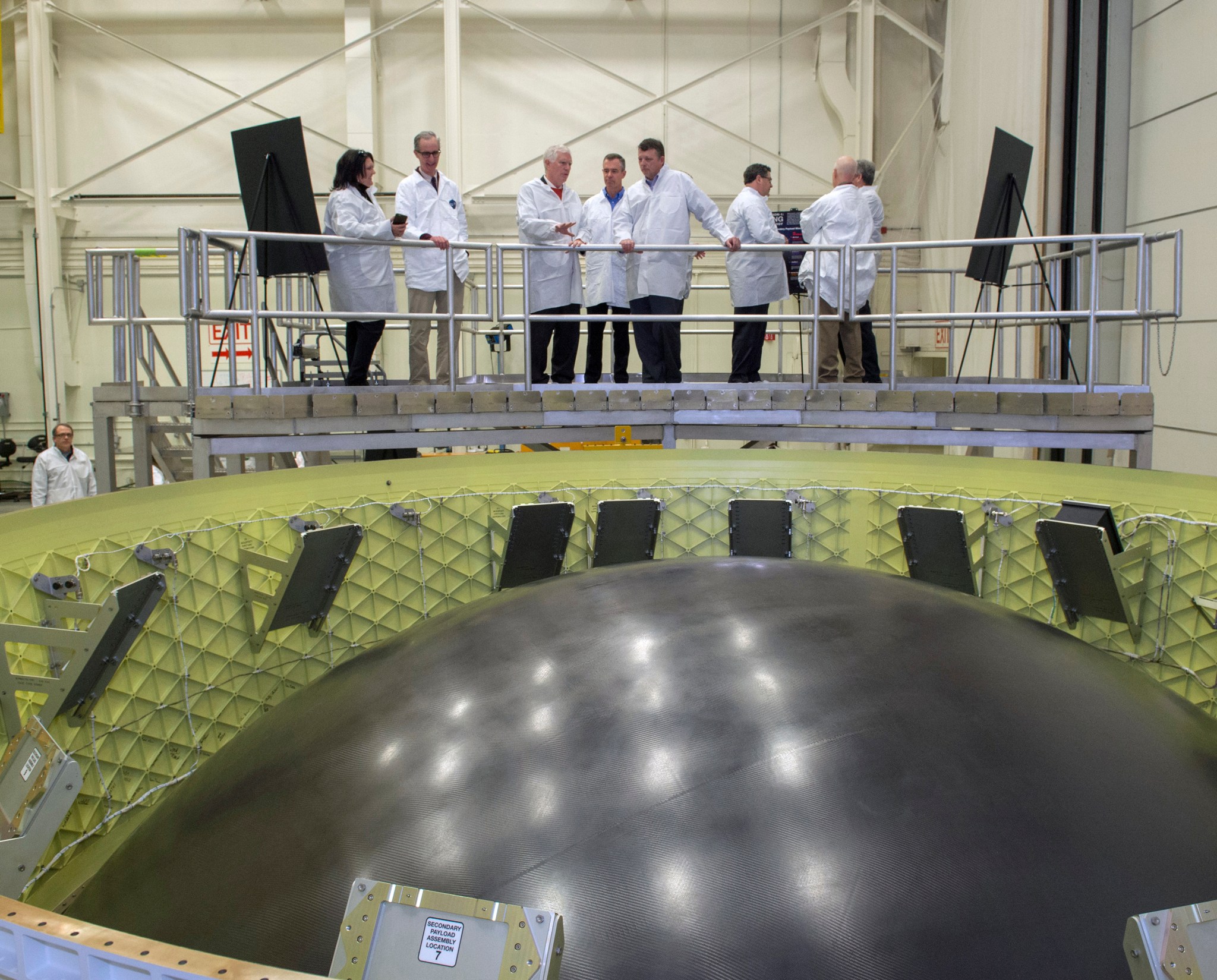
U.S. Rep. Mo Brooks, third from left, who represents Alabama’s 5th Congressional District, visited NASA’s Marshall Space Flight Center Jan. 24 to see the agency’s Space Launch System Orion Stage Adapter and toured the center with Marshall Center Director Todd May and SLS leadership. The adapter is expected to be shipped from Marshall to NASA’s Kennedy Space Center in early 2018. A key component of the Marshall-managed SLS rocket, the adapter will attach the Orion upper stage to the SLS core stage. Additionally, the adapter will house 13 CubeSat secondary payloads that will fly on the first flight of SLS — Exploration Mission–1. (NASA/MSFC/Emmett Given)
This Week in NASA History: STS-63 Launches – Feb. 3, 1995
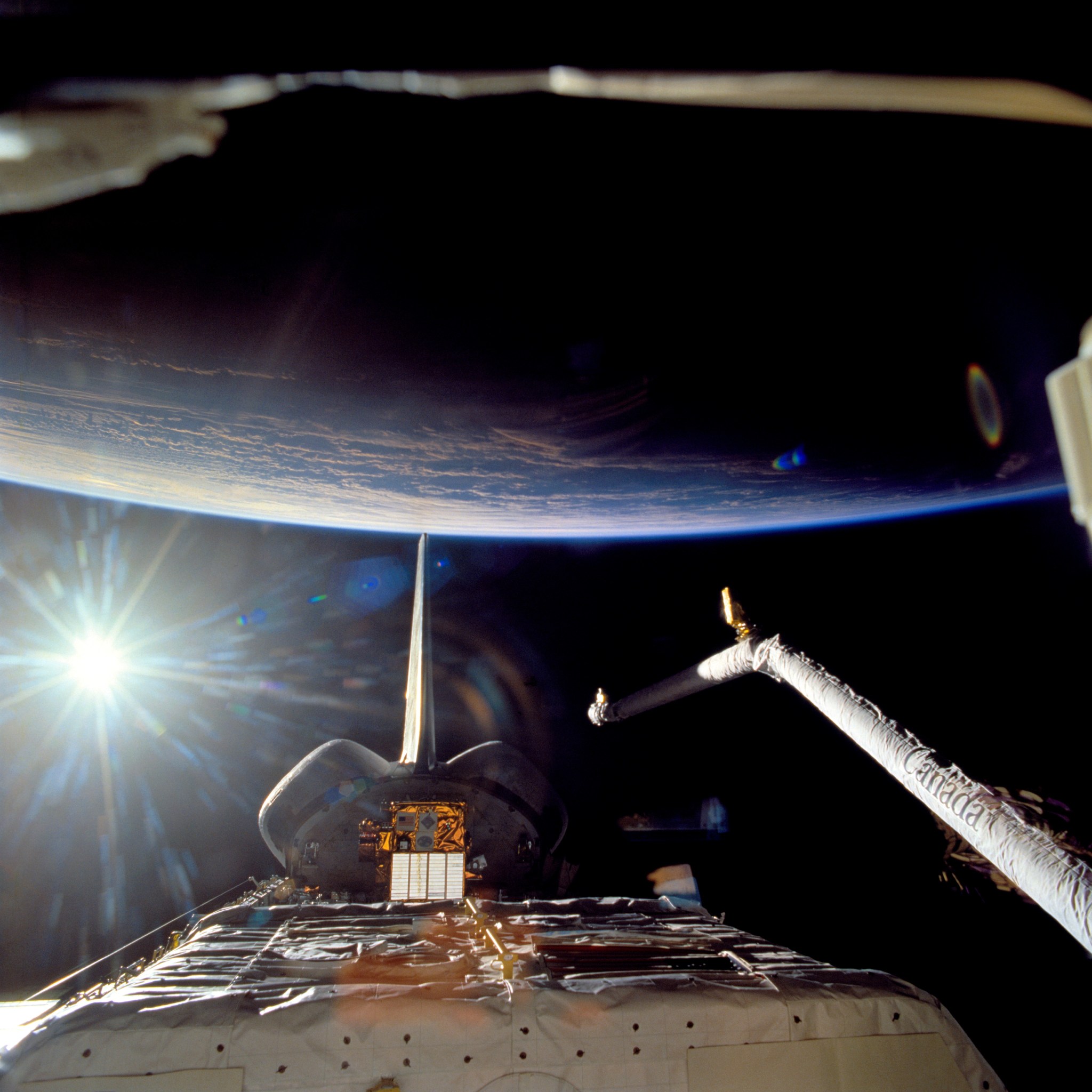
This week in 1995, STS-63 launched aboard the space shuttle Discovery from NASA’s Kennedy Space Center. STS-63 marked the third flight of SPACEHAB-3, a commercially developed module that carried 20 experiments, including biotechnology and advanced material development experiments, technology demonstrations and hardware measuring on-orbit accelerations. Today, the Payload Operations Integration Center at NASA’s Marshall Space Flight Center serves as “science central” for the International Space Station, working 24/7, 365 days a year in support of the orbiting laboratory’s scientific experiments. The NASA History Program is responsible for generating, disseminating and preserving NASA’s remarkable history and providing a comprehensive understanding of the institutional, cultural, social, political, economic, technological and scientific aspects of NASA’s activities in aeronautics and space. For more pictures like this one and to connect to NASA’s history, visit the Marshall History Program’s webpage. (NASA)
Obituaries
John R. Admire, 79, of Huntsville, died Jan. 21. He retired from the Marshall Center in 1997 as an aerospace engineer. He is survived by his wife, Heidrun V. Admire.

